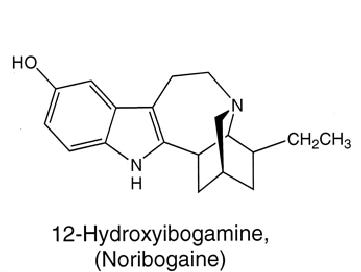The Frontier Psychiatrists is a daily health-themed newsletter. Today: a psychedelic compound, well on its way to becoming a medicine. The African shrub Iboga has roots, and those roots contain the following compound:
Ibogaine may be the farthest thing from a “fun club drug” you can find. The experience of consciousness alteration and “psychedelic trip” is very stereotyped. It’s also all in your head—people are around to help you physically if you need to get to the bathroom, but, as Nolan R. Williams, M.D. explains:
the ibogaine trip itself is essentially internal and self-directed. People often experience a life review that appears in their mind almost like a slideshow, Williams says. “It somehow drives a particular sort of psychological phenomenon that you don’t achieve through guidance,” he adds.
People describe a similar experience, in which they are in a room, and get to watch a slide show or movie of challenging experiences, with the ability to take a new perspective. For exa…




